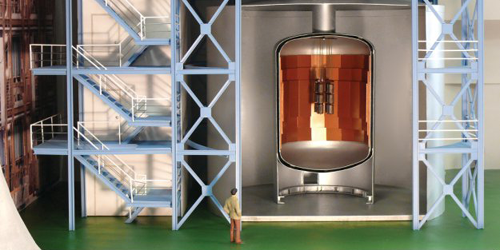Search for Neutrinoless Double-Beta Decay Wraps Up
Since 2011, the GERDA experiment has investigated whether the neutrino is its own antiparticle. Now, this ambitious multiyear study has come to a close. In their final results, the GERDA team reports no evidence that neutrinos and antineutrinos are one and the same [1]. But the limits they provide will inform the next generation of experiments, which could reveal fundamental neutrino properties, such as its mass, and how matter got an edge over antimatter in the early moments of the Universe (see Viewpoint: The Hunt for No Neutrinos).
Hidden beneath 1400 meters of rock at the Gran Sasso National Laboratory in Italy, GERDA sought evidence of a hypothetical nuclear transformation known as neutrinoless double-beta decay. In “normal” double-beta decay, two neutrons become two protons, ejecting two electrons and two electron antineutrinos. However, if neutrinos are their own antiparticles, occasionally the two antineutrinos should annihilate each other.
GERDA looked for this rare behavior by monitoring electrons emitted by about 36 kg of germanium enriched with the isotope germanium-76, one of the few radionuclides known to support normal double-beta decay. If neutrinoless decay occurred, GERDA would have detected occasional pairs of electrons carting away all the energy lost in the transmutation. None were found.
The study showed that if neutrinoless double-beta decay happens, it must do so with a half-life of at least 1.8×1026 years. By demonstrating that it is possible to isolate germanium-based searches from environmental interference, GERDA improved upon the sensitivity of previous efforts by an order of magnitude. These lessons will be critical for upcoming searches such as LEGEND, which aims to detect neutrinoless double-beta decay even if its half-life is greater than 1028 years.
References
- M. Agostini (GERDA Collaboration), “Final results of GERDA on the search for neutrinoless double-𝛽 decay,” Phys. Rev. Lett. 125, 252502 (2020).




